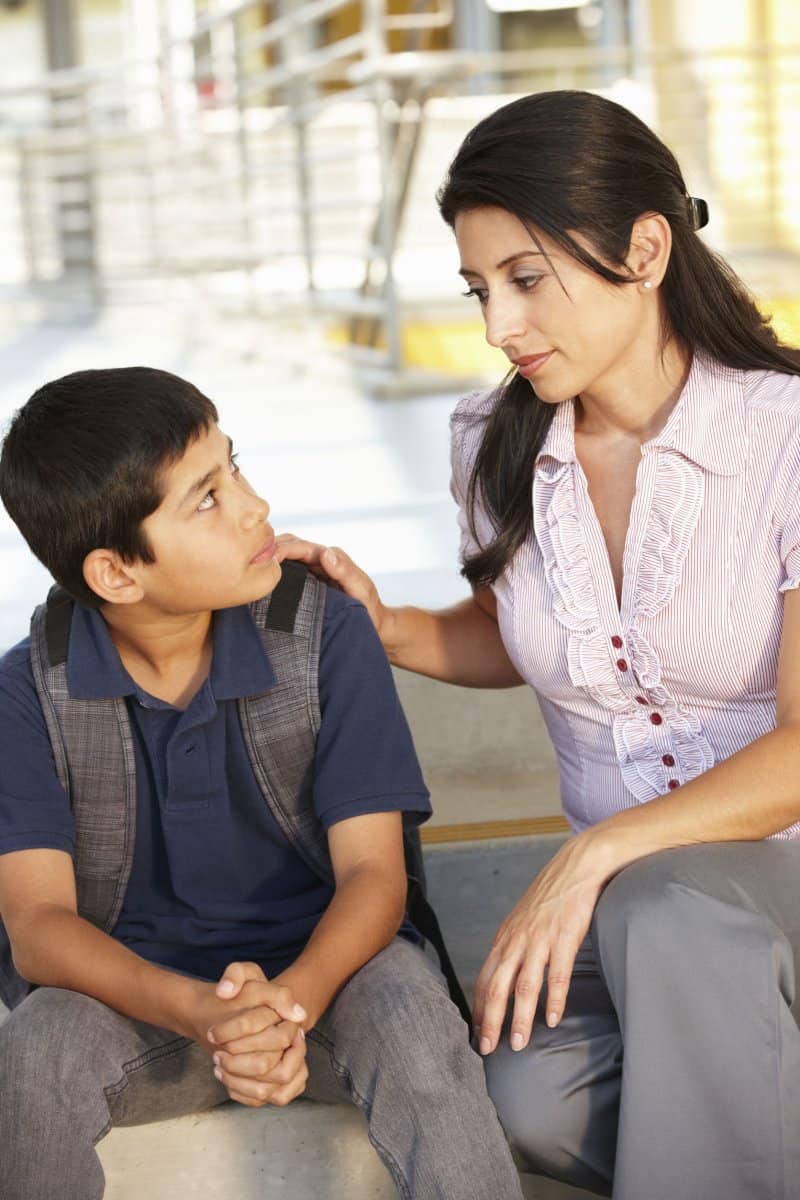 According to the National Center for Victims of Crime, 1 in 5 girls and 1 in 20 boys is a victim of child sexual abuse (CSA). For this reason, talking to children about good and bad touch is essential in helping them keep their bodies safe.
According to the National Center for Victims of Crime, 1 in 5 girls and 1 in 20 boys is a victim of child sexual abuse (CSA). For this reason, talking to children about good and bad touch is essential in helping them keep their bodies safe.
When is the best time to teach my child about good and bad touch?
Although children are the most vulnerable to CSA between the ages of 7 and 13, there are perpetrators who target victims as early as infancy. Because of this, the best time to talk to your child about good and bad touch is as soon as they are capable of understanding your words.
How should I talk to my child about good and bad touch?
First, it is important that you talk with your child in kid friendly language that they will understand. There many activity and educational books available (see resources below) if you feel that you need some help in figuring out the right language to use. These books cover the different concepts that should be addressed when talking about good and bad touch and generally include the following:
- Talking about Bodies:
- Let your child know that their body is very special and that it is important for them to take care of their bodies.
- Educate them on the names of their different body parts – both private and not private. During this part of the conversation, do not shy away from using the correct anatomical names for private parts (e.g., breasts, vagina, buttocks, penis). It is important that children know and practice saying the correct names so that they are not embarrassed and if they are touched inappropriately, they can accurately explain it to others.
- Use the bathing suit rule – Tell your child that both girls’ and boys’ private parts are covered by their bathing suits.
- Talking about Good and Bad Touches:
- Good touches:
- Help your child identify good touches (e.g., hand holding, hugging, high fives).
- Let them know that although these kinds of touches are generally okay, if they make them feel uncomfortable in any way, then they are not okay.
- Also teach your child about touches that might not feel okay, but are still good for the body (e.g., shots, cleaning a cut).
- Talk with your child about grown-ups who are allowed to touch their private parts at specific times (e.g., doctor, parent).
- Bad touches:
- Talk about touches that are not okay because they hurt or leave a bruise, a cut, or a burn (e.g., hitting, kicking, pushing). Let them know that it is not okay for other children to do these things to them and if an adult does, it is called physical abuse.
- Tell your child that it is not okay for grown-ups or older kids to look at or touch their private parts and that it also is not okay for a grown-up or older kids to make them look at or touch their own private parts. Not okay touching of private parts is called sexual abuse.
- Once you have talked about both good and bad touches, give your child some examples and see if they can identify if it is a good or bad kind of touch.
- Good touches:
- What to do about Non Okay Touches:
- Tell your child that they can say “No” or “Stop” or “I don’t like that” or “Don’t touch me” or anything else that means NO. Also tell them that they can run away. Practice this with a role play.
- Tell your child that sometimes a person who touches a child with a not okay touch will tell them that it is a secret. Talk to your child about what kinds of secrets are okay and which ones are not. Let them know that this is not an okay kind of secret and so they should always be shared with a trusted grown up.
- Help your child identify who they could talk to if someone has touched them in a not okay way.
Remember that talking about good and bad touch is not a one-time conversation. Children learn best from repetition and openly talking about it will help your child feel more comfortable talking about it as well.
Useful activity and educational books:
“Let’s Talk about Taking Care of You” by Lori Stauffer, PhD and Esther Deblinger, PhD
“Good Touch Bad Touch” – http://www.villagecounselingcenter.net/Good_Touch_-_Bad_Touch_-_Workbook.pdf
“Some Parts are Not for Sharing” by Julie K. Federico (For ages 6 months and up)
“It’s MY Body” by Lory Freeman (For ages 3-8)
“Loving Touches” by Lory Freeman (For ages 3-8)
“My Body is Private” by Linda Walvoord Girard (For ages 6-11)
“The Right Touch” by Sandy Kleven (For ages 3-8)
“The Trouble with Secrets” by Karen Johnsen (For ages 3-8)
“Your Body Belongs to You” by Cornelia Spelman (For ages 3-6)
“My Body Belongs to Me” by Jill Starishevsky (For ages 3-8)
“A Secret Safe to Tell” by Naomi Hunter (For ages 3-8)
“Some Secrets Should Never Be Kept” by Jayneen Sanders (For ages 3-8)
Resources used for this blog:
https://b-inspiredmama.com/10-tips-for-teaching-kids-about-good/
Stauffer, L. & Deblinger, E. (2003). Let’s talk about taking care of you. Hatfield, PA: Hope for Families.





